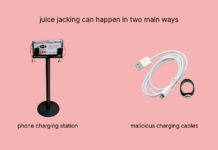Hello there, and welcome to this article on Simple Confidence Building Techniques. In this post, we will explore practical and easy-to-implement techniques you can practice daily to improve your confidence levels. But before we dive into the techniques, let’s take a moment to define what confidence is and why it’s essential.
Confidence is a feeling of self-assurance that arises from within. It’s the ability to trust yourself and your abilities and to believe in your worth and potential. Confidence plays a crucial role in our personal and professional lives. It helps us to tackle challenges, take risks, and achieve our goals. When we are confident, we radiate positivity and attract success, opportunities, and fulfilling relationships.
The techniques we will explore in this article are designed to help you build confidence by focusing on different aspects of your mental and physical state. Practicing these techniques regularly can reprogram your mind and body to think and act confidently.
The following section will explore the first technique for building confidence: Affirmations.
Technique 1: Affirmations
Affirmations are positive statements that you can use to reinforce your confidence and self-belief. They are simple but powerful tools that you can use to change your inner dialogue and shift your mindset toward positivity. In the following section, we will explore the different types of affirmations you can use and how to incorporate them into your daily routine.
Positive affirmations are simple but powerful statements that you can use to reprogram your subconscious mind. Our thoughts create our reality, and by repeating positive affirmations, we can change our thoughts and beliefs about ourselves. For example, instead of saying, “I am not good enough,” we can repeat, “I am capable and deserving of success.” Positive affirmations help us focus on our strengths and potential rather than our perceived weaknesses and limitations.
Here are a few examples of affirmations for building confidence:
I am confident in my abilities and worth
I trust myself to make the right decisions
I deserve success and happiness
I radiate positivity and attract success
I am comfortable and confident in social situations
When creating affirmations, using present tense and positive language is essential. Focus on what you want to achieve rather than what you want to avoid. For example, instead of saying, “I don’t want to be nervous,” say, “I am calm and confident.”
To practice affirmations, find a quiet place where you won’t be disturbed and repeat your affirmations out loud or silently to yourself. You can also write your affirmations down and place them somewhere visible, such as your mirror or workspace.
Incorporating affirmations into your daily routine can help you build confidence and change your mindset. Set aside a few minutes each day to practice affirmations, and you’ll notice a positive shift in your thoughts and behaviors.
Are you ready to start practicing affirmations to build confidence? In the next section, we will explore the second technique: Visualization. Let’s continue!
Technique 2: Visualization
Have you ever heard the saying, “If you can see it, you can achieve it”? Visualization is a powerful technique that can help you build confidence by creating mental images of yourself achieving your goals and succeeding in various situations. Visualization is a form of mental rehearsal that can help you prepare for challenges, build self-belief, and reduce anxiety.
To get started with visualization:
Think about a specific goal you have and the outcome you desire.
Close your eyes and imagine yourself in a situation where you have achieved that goal.
Use all your senses to create a vivid mental image, including sights, sounds, and feelings.
For example, if you want to ace a job interview, visualize yourself walking confidently into the interview room, making eye contact, and answering questions efficiently.
Another effective visualization technique is creating a vision board. A vision board is a visual representation of your goals and aspirations. You can create a physical board with pictures and words representing your goals, or you can use a digital tool like Pinterest to create a virtual vision board. Keep your vision board somewhere you can see daily, like your bedroom or office, to help you stay motivated and focused on your goals.
Incorporating visualization into your daily routine is simple. Take a few minutes each day to visualize yourself succeeding in a specific situation, or look at your vision board and visualize yourself achieving your goals. With practice, visualization can become a powerful tool for building confidence and achieving success.
Technique 3: Body Language
Body language plays a crucial role in how others perceive us and how we perceive ourselves. When we adopt confident body language, we appear more confident to others and feel more confident in ourselves. On the other hand, slouching, fidgeting, and avoiding eye contact can signal insecurity and undermine our confidence.
To build confidence through body language, try incorporating these techniques:
Stand up straight: Good posture can significantly affect our feelings and perceptions. You’ll naturally exude confidence and authority when you stand up straight, with your shoulders back and head held high.
Make eye contact: Maintaining eye contact shows you’re engaged and confident. It can also help you connect with others and build rapport.
Use confident gestures: Strong, purposeful gestures can reinforce your message and help you appear more confident. For example, when making a point, try using open-handed gestures or leaning in slightly to show that you’re confident in what you’re saying.
Take up space: When you take up more space with your body, such as sitting or standing with your legs slightly apart, you’ll feel more powerful and in control.
Incorporating these body language techniques into your daily routine can help you feel more confident and in control. Try practicing them during meetings, presentations, or social events, and see how they can make a difference.
Technique 4: Gratitude
Gratitude is one of the most effective yet simple techniques for building confidence. It involves focusing on the things we have and appreciating them rather than constantly striving for more.
When we practice gratitude, we shift our focus away from what we lack and instead focus on the abundance surrounding us. This helps to cultivate a sense of positivity and optimism, which in turn can boost our confidence.
There are many ways to practice gratitude, and it can be as simple as taking a few minutes each day to reflect on what you’re thankful for. Some people like to keep a gratitude journal, writing down things they’re grateful for daily. Others prefer to express gratitude verbally by thanking others for their help or kindness.
To start practicing gratitude, try to focus on the positive aspects of your life. Please take a few minutes each day to reflect on what you’re thankful for, whether it’s your health, your relationships, or simply the fact that you have a roof over your head. Over time, this practice helps you to feel more confident and content with your life.
Technique 5: Stepping Out of Your Comfort Zone
Stepping out of your comfort zone means doing things that challenge you and push you beyond your limits. It can be scary and uncomfortable, but it’s also one of the best ways to build confidence. Doing something you didn’t think you could gives you a sense of accomplishment that can boost your self-esteem.
Stepping out of your comfort zone can look different for everyone. For some people, it might mean speaking up in a meeting at work or taking on a new project. For others, it could be trying a new hobby or activity they’ve always been interested in but have yet to have the courage to pursue.
One way to make stepping out of your comfort zone a daily habit is to start small. Set a goal to do something that scares you every day, whether it’s striking up a conversation with a stranger or trying a new food. As you become more comfortable with small challenges, you can gradually increase the difficulty level.
Remember that failure is a natural part of stepping out of your comfort zone. Not everything will go as planned, and that’s okay. It’s crucial to view failures as growth opportunities and learn from them rather than letting them discourage you.
By consistently stepping out of your comfort zone, you can build the confidence to take on more significant challenges and pursue your goals with more self-assurance.
Conclusion
Wow, we covered a lot in this post! Let’s do a quick recap of the five techniques we discussed for building confidence:
Positive Self-talk: Replace negative thoughts with positive affirmations to change how you view yourself and your abilities. For example, instead of thinking, “I’m not good enough,” try repeating, “I am capable and strong.”
Visualization: Picture yourself succeeding in a specific situation to help reduce anxiety and build confidence. For example, visualize yourself giving a speech with confidence and poise.
Exercise: Get your body moving to release endorphins, reduce stress, and improve overall mood. Even a quick walk or some stretching can do wonders for your confidence.
Dress for Success: Wear clothes that make you feel good and confident, even if it’s just for a quick trip to the grocery store. Putting effort into your appearance can help boost your mood and self-esteem.
Practice Gratitude: Take time each day to reflect on the good things in your life and express gratitude. This can help shift your focus from negative thoughts to positive ones.
Now, it’s important to remember that building confidence is not a one-time thing. It requires daily practice and commitment. Incorporating these techniques into your daily routine can help you build long-term confidence and feel more empowered in all areas of your life.
So, try these techniques and see what works best for you. Feel free to experiment and find what feels good and natural. And most importantly, be patient and kind to yourself throughout the process. Confidence building is a journey, not a destination. Keep at it, and you’ll be amazed at how much you can achieve!

















